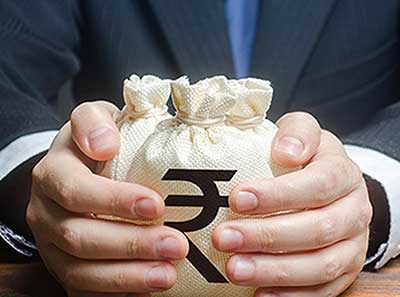Date: 20/01/2023
Relevance: GS-3: Indian Economy and issues relating to planning, mobilization, of resources, growth, development and employment.
Key Phrases: Amrit Kaal, Taxpayers, Borrowing, Tax-To-GDP Ratio, Expenditures, Informal Sector, Direct To Indirect Tax Ratio, Tax Litigation, Per Capita Income, Compliance, Evasion.
Context:
- The Prime Minister has outlined the period from 2022 to 2047 as the "Amrit Kaal" and aims to transform India into a developed nation during this period.
- To achieve this goal, significant investments in social infrastructure are necessary, and these funds should come from taxpayers rather than borrowing.
Key Highlights:
- India’s tax-to-GDP ratio is still below the critical mark of 15 per cent, which is when a country starts to comfortably get resources to make quality expenditures.
- India’s gross tax to GDP, which was 11 per cent in FY19, fell to 9.9 per cent in FY20 and marginally improved to 10.2 per cent in FY21 (partly due to decline in GDP) and is estimated at 10.8 per cent in FY22.
- This is much lower than the emerging market economy average of 21 per cent and the OECD average of 34 per cent.
Why Tax to GDP Ratio is Low?
- The five predominant reasons for the low Tax-to-GDP ratio are:
- A large informal sector and a high incidence of tax evasion.
- Tax exemption for agriculture.
- Poor direct to indirect tax ratio of 35:65 vs OECD ratio of 67:33 in favour of direct taxes.
- Low per capita income;
- High incidence of tax litigation.
- Data shows that the five most common means of tax evasion in
India are:
- Smuggling and illicit trade.
- Not paying income tax by concealing income.
- Evasion of GST by not reporting or under-invoicing sales.
- Evasion of excise duty by undisclosed manufacturing.
- International corporate tax abuse.
- According to a FICCI CASCADE report, the two most smuggled goods
are alcoholic beverages and tobacco which account for 49 per cent
of the tax loss from illicit goods.
- The estimated tax loss from the illicit trade of tobacco products is ₹13,331 crore and ₹15,262 crores for alcoholic beverages.
- This is what the parallel trade earns at the cost of the nation.
- Another example is online gaming where high TDS on gaming income is creating an incentive for offshore illegal gambling platforms to thrive in India.
Understanding the Tax-to-GDP Ratio
- Taxes are a critical measure of a nation’s development and governance. The tax-to-GDP ratio is used to determine how well a nation's government directs its economic resources. Higher tax revenues mean a country is able to spend more on improving infrastructure, health, and education—keys to the long-term prospects for a country’s economy and people.
- Key Facts:
- The tax-to-GDP ratio is a measure of a nation's tax revenue relative to the size of its economy.
- This ratio is used with other metrics to determine how well a nation's government directs its economic resources via taxation.
- Developed nations typically have higher tax-to-GDP ratios than developing nations.
- Higher tax revenues mean a country is able to spend more on improving infrastructure, health, and education—keys to the long-term prospects for a country’s economy and people.
- According to the World Bank, tax revenues above 15% of a country’s gross domestic product (GDP) are a key ingredient for economic growth and, ultimately, poverty reduction.
What Does the Data Say?
- According to Finance Ministry data, only 1 per cent of Indians pays income tax and declares earnings above the non-taxable threshold.
- Only 5.78 crore income tax returns were filed by individual taxpayers for FY2018-19 till February 2020. Out of this, only 1.46 crore individual taxpayers filed returns declaring income above ₹5 lahks.
- This does not match with the population of cars and two-wheelers in India, none of which at the current inflationary prices can be afforded by people below an annual income of ₹5 lahks.
- A report by the State of Tax Justice states that India is losing around ₹75,000 crore in taxes every year due to international corporate tax abuse and private tax evasion.
Initiatives Taken By Government:
- Some Initiatives are taken by Govt. to widen the Income Tax Base in
India:
- Cross seeding of PAN with Bank Accounts.
- The Finance Act 2020-This act allowed individual taxpayers as well cooperative payers to pay taxes at concessional rates if they are unable to get any incentive or any specified exemption
- Use of Computer-aided technology-The GOI took the help of Computer Assisted Scrutiny Selection (CASS), Non-filers monitoring system (NMS), Income tax business application (ITBA) to find out and take strict action against tax evaders.
- Cutting Income Tax Rates: The Government is trying to cut down income tax rates thus reducing the threshold value of income tax. This step will help the government collect taxes from more people, thus widening the income tax base in India.
Conclusion:
- Factors which can yield immediate returns are, identifying more tax paying sectors and accelerating compliance.
- So government must push for the widening of taxes, giving up the temptation to further tax the taxed, even if these are wealthy individuals or sin goods to prevent evasion and foster a deeper culture of compliance for the development of the nation.
Source: Business line
Mains Question:
Q. The government needs to widen the tax base and resist the temptation of overtaxing some segments, which often backfires with growth in evasion, pushing economic activity underground. Comment (150 words)






















